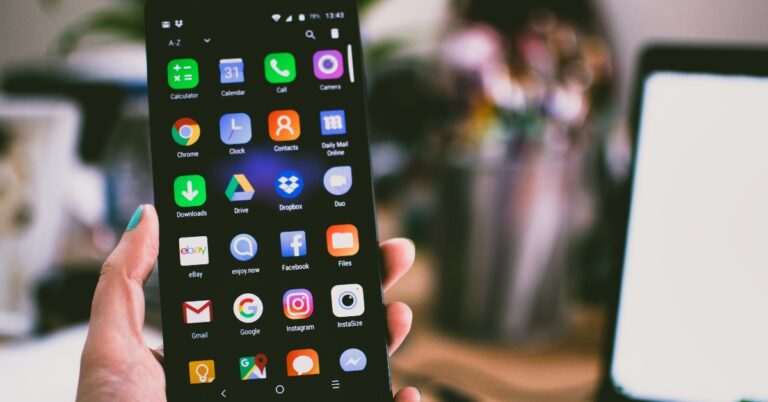In This Article
Samsung Galaxy A34 review: Design and Display
Upon unpacking the box, you will find the A34 smartphone, a USB Type-C to Type-C charging cable, a SIM ejector tool, and some basic reading material. No power adapter or plastic case for Samsung’s mid-ranger. Samsung has applied its flagship S23’s design language to the A series as well this year. The lenses on the vertical triple camera array don’t stick out as much as they do on the A54. The back panel on the A34 is made entirely from plastic and is a stark departure from the glass back on the A54. However, the frame here is a bit sleeker, which we like.
The glossy plastic back has the tendency to attract a few smudges but it does not amount to be a nuisance. Also, worth noting that we only observed prints and smudges upon prolonged use, that too in humid conditions. Without a glass back to elevate the in-hand feel of the device, the A34 does feel quite ordinary.
Samsung has applied its flagship S23’s design language to the A series as well this year. The lenses on the vertical triple camera array don’t stick out as much as they do on the A54. The back panel on the A34 is made entirely from plastic and is a stark departure from the glass back on the A54. However, the frame here is a bit sleeker, which we like.
The glossy plastic back has the tendency to attract a few smudges but it does not amount to be a nuisance. Also, worth noting that we only observed prints and smudges upon prolonged use, that too in humid conditions. Without a glass back to elevate the in-hand feel of the device, the A34 does feel quite ordinary.
 On the right edge of the frame, you get the volume rocker keys and the power button. At the bottom, you will find the microphone, the USB port, and the primary speaker grill. The hybrid SIM tray and secondary speaker have been placed up top. The left edge of the phone is clean and keyless.
On the right edge of the frame, you get the volume rocker keys and the power button. At the bottom, you will find the microphone, the USB port, and the primary speaker grill. The hybrid SIM tray and secondary speaker have been placed up top. The left edge of the phone is clean and keyless.
 Up front, you get a 6.6-inch display, which is bigger than the 6.4-inch unit on the A54. If you prioritise display over everything else then Samsung’s smartphones are a no-brainer, no matter which category you’re shopping in. Samsung has bumped the refresh rate on this Super AMOLED display to 120Hz, enhancing the fluidity and the overall scrolling experience.
With a 1,080 x 2,340p resolution, this stunning display captures a lot of details in the images it relays. The deep blacks and punchy, vivid colours make this device ideal to watch content on. With wide viewing angles, you don’t have to worry about how your phone is placed while watching videos on it. With a peak brightness of 1,000 nits, the display is decently visible under direct sunlight.
Up front, you get a 6.6-inch display, which is bigger than the 6.4-inch unit on the A54. If you prioritise display over everything else then Samsung’s smartphones are a no-brainer, no matter which category you’re shopping in. Samsung has bumped the refresh rate on this Super AMOLED display to 120Hz, enhancing the fluidity and the overall scrolling experience.
With a 1,080 x 2,340p resolution, this stunning display captures a lot of details in the images it relays. The deep blacks and punchy, vivid colours make this device ideal to watch content on. With wide viewing angles, you don’t have to worry about how your phone is placed while watching videos on it. With a peak brightness of 1,000 nits, the display is decently visible under direct sunlight.
 The bezels are still noticeable around the display and could use a little trimming. But a bigger letdown is the waterdrop cutout for the selfie camera which is an absurd choice on a Rs 30,000 smartphone in 2023. A punch-hole cutout for the front camera would have significantly improved the look of the phone.
The IP67 rating for dust and water resistance is a great sight on the Samsung Galaxy A34. You will hardly find any smartphones in this price range offering complete water resistance. You also get Corning Gorilla Glass 5 protection up front, which can absorb minor falls with ease.
The bezels are still noticeable around the display and could use a little trimming. But a bigger letdown is the waterdrop cutout for the selfie camera which is an absurd choice on a Rs 30,000 smartphone in 2023. A punch-hole cutout for the front camera would have significantly improved the look of the phone.
The IP67 rating for dust and water resistance is a great sight on the Samsung Galaxy A34. You will hardly find any smartphones in this price range offering complete water resistance. You also get Corning Gorilla Glass 5 protection up front, which can absorb minor falls with ease.
Samsung Galaxy A34 review: Performance and Cameras
Samsung Galaxy A34 comes in two storage variants – 128GB and 256GB. Both variants are offered with 8GB RAM. The 256GB variant gets a price tag of Rs 32,999. Samsung has ditched its Exynos chipset for a more powerful MediaTek Dimensity 1080 on this smartphone. The A34 comes with Android 13 skinned with One UI 5.1 out of the box. Samsung has promised four years of major OS upgrades along with five years of security patches on this device. In terms of software support, you won’t find a better deal anywhere else. We used the Samsung Galaxy A34 as our daily for almost a week for this review. During our time with the phone, we did not run into any major performance issues. The Dimensity 1080 SoC is a common fixture on a lot of smartphones in this category. We used the A34 for routine tasks like checking emails, browsing social media, GPS navigation, playing video content, and more. There were no complications to report and the smartphone easily crushed these tasks while also running a handful of apps in the background.
To check out the gaming experience on the A34 we played Free Fire Max and Call of Duty mobile on the A34. The gameplay experience was quite satisfactory and the stellar display offers amazing fluidity and touch response. We noticed some minor heating around the camera bump around the 20-minute mark which slowly crept up as we kept playing. We pushed the device to its limit and were happy with the results. We did not experience any throttling for the first 40 minutes. After that, we had to stop the gameplay and let the device cool for a bit. We ran the Geekbench 6 test on the Samsung Galaxy A34 and it returned a single-core score of 734 points and a multi-core score of 2,472 points.
We used the Samsung Galaxy A34 as our daily for almost a week for this review. During our time with the phone, we did not run into any major performance issues. The Dimensity 1080 SoC is a common fixture on a lot of smartphones in this category. We used the A34 for routine tasks like checking emails, browsing social media, GPS navigation, playing video content, and more. There were no complications to report and the smartphone easily crushed these tasks while also running a handful of apps in the background.
To check out the gaming experience on the A34 we played Free Fire Max and Call of Duty mobile on the A34. The gameplay experience was quite satisfactory and the stellar display offers amazing fluidity and touch response. We noticed some minor heating around the camera bump around the 20-minute mark which slowly crept up as we kept playing. We pushed the device to its limit and were happy with the results. We did not experience any throttling for the first 40 minutes. After that, we had to stop the gameplay and let the device cool for a bit. We ran the Geekbench 6 test on the Samsung Galaxy A34 and it returned a single-core score of 734 points and a multi-core score of 2,472 points.
 The OS experience offered by One UI 5.1 is also remarkable. The only premium feature missing from this smartphone is Samsung DeX, which is reserved for Samsung’s flagship products. The device gives you the option to skip installing the bloatware apps while setting up the phone but some apps like Amazon, Facebook, and Jio Cinema still manage to creep through. The Galaxy Widget is a great feature to make your home screen interesting, but it only displays advertisements if you don’t spend time customising it.
Samsung claims a 2-day battery life on the A54 and A34, equipping both phones with a 5,000 mAh battery unit. We tested this out and it (kind of) holds up. You can extend the battery life of the phone to 2 days if you don’t perform heavy tasks like gaming or prolonged navigation. If you stick to social media browsing and watching videos for a short duration, the phone will last almost two days. This means limiting the screen-on time to three hours per day.
With moderate to heavy usage, the A34 offers the standard one-day battery life. This is still pretty impressive because we were racking up almost 6-7 hours of screen-on time while performing heavy tasks like gaming, playing HD videos across multiple platforms, video recording, and even some light editing. By the end of the day, we were left with a 15% charge.
What we find interesting is that the A54 with its in-house Exynos chip falls slightly behind the A34 in terms of battery life. What unites both phones is 25W wired charging. Like the A54, Samsung Galaxy A34 takes around 90 minutes to fully charge. It is about time Samsung starts offering better charging speeds for their midrange offerings.
The rear camera unit on the A34 consists of a 48MP primary shooter, an 8MP ultrawide lens, and a 5MP macro camera. In ample natural lighting, the 48MP main camera delivers a powerful performance, producing very rich colours on the images without over-processing them too much. We were also happy with the amount of detail captured by this lens, and it resulted in sharp, well-composed images. The images are definitely ‘social media ready’ with slightly heightened contrast and some minor tune-up.
The OS experience offered by One UI 5.1 is also remarkable. The only premium feature missing from this smartphone is Samsung DeX, which is reserved for Samsung’s flagship products. The device gives you the option to skip installing the bloatware apps while setting up the phone but some apps like Amazon, Facebook, and Jio Cinema still manage to creep through. The Galaxy Widget is a great feature to make your home screen interesting, but it only displays advertisements if you don’t spend time customising it.
Samsung claims a 2-day battery life on the A54 and A34, equipping both phones with a 5,000 mAh battery unit. We tested this out and it (kind of) holds up. You can extend the battery life of the phone to 2 days if you don’t perform heavy tasks like gaming or prolonged navigation. If you stick to social media browsing and watching videos for a short duration, the phone will last almost two days. This means limiting the screen-on time to three hours per day.
With moderate to heavy usage, the A34 offers the standard one-day battery life. This is still pretty impressive because we were racking up almost 6-7 hours of screen-on time while performing heavy tasks like gaming, playing HD videos across multiple platforms, video recording, and even some light editing. By the end of the day, we were left with a 15% charge.
What we find interesting is that the A54 with its in-house Exynos chip falls slightly behind the A34 in terms of battery life. What unites both phones is 25W wired charging. Like the A54, Samsung Galaxy A34 takes around 90 minutes to fully charge. It is about time Samsung starts offering better charging speeds for their midrange offerings.
The rear camera unit on the A34 consists of a 48MP primary shooter, an 8MP ultrawide lens, and a 5MP macro camera. In ample natural lighting, the 48MP main camera delivers a powerful performance, producing very rich colours on the images without over-processing them too much. We were also happy with the amount of detail captured by this lens, and it resulted in sharp, well-composed images. The images are definitely ‘social media ready’ with slightly heightened contrast and some minor tune-up.


 The Portrait Mode does a great job of separating the subject from the background and taking close-up images with a good amount of detail with them. You can see the results for yourself in the images below. The macro camera struggles to find its purpose in this array, and you’ll hardly ever find yourself using it.
The Portrait Mode does a great job of separating the subject from the background and taking close-up images with a good amount of detail with them. You can see the results for yourself in the images below. The macro camera struggles to find its purpose in this array, and you’ll hardly ever find yourself using it.






Verdict
Samsung has priced the Galaxy A34 at Rs 30,999, but using Premier Sale offers you can get it for as low as Rs 25,000. At this price, there are many good things to like about this phone. Firstly, the Super AMOLED display on the A34 is excellent and largely unmatched by any other phone in this segment. The MediaTek Dimensity 1080 SoC is also a great addition to this device. On top of that, you get a good primary and ultrawide camera. If you can look past the dated waterdrop notch on the display and the slow charging, the Samsung Galaxy A34 will make a solid daily driver.Samsung Galaxy A34: Pros
- Great display
- Good SoC
- Tremendous battery life
- 4 major OS upgrades + 5 years of security patches
Samsung Galaxy A34: Cons
- Sizeable bezels around the display along with a waterdrop notch
- Slow charging
- Macro lens doesn’t need to be there


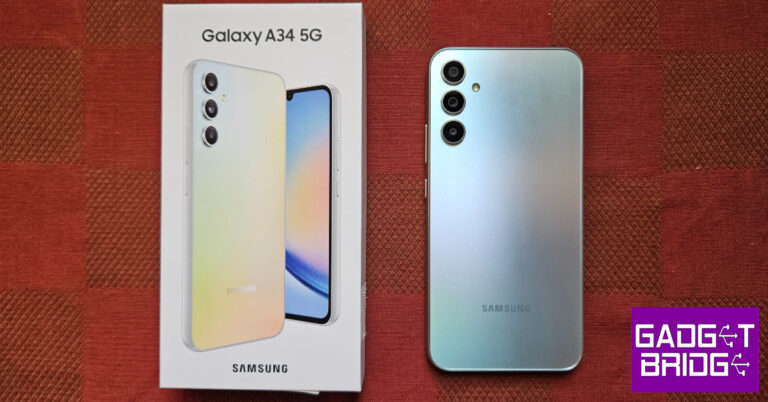




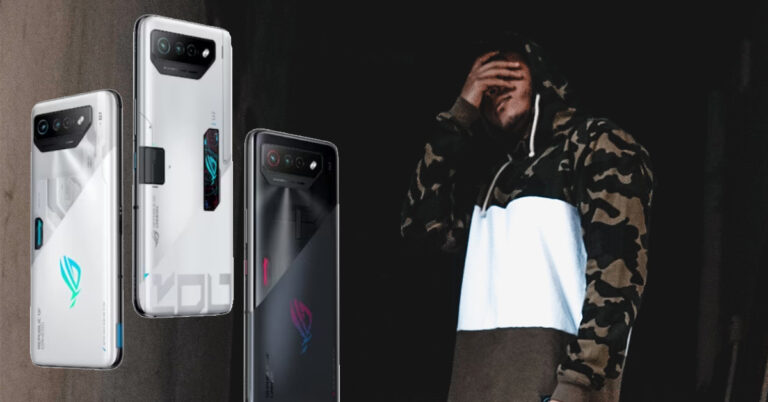


 Step 2:
Step 2: Step 3:
Step 3: Step 4:
Step 4: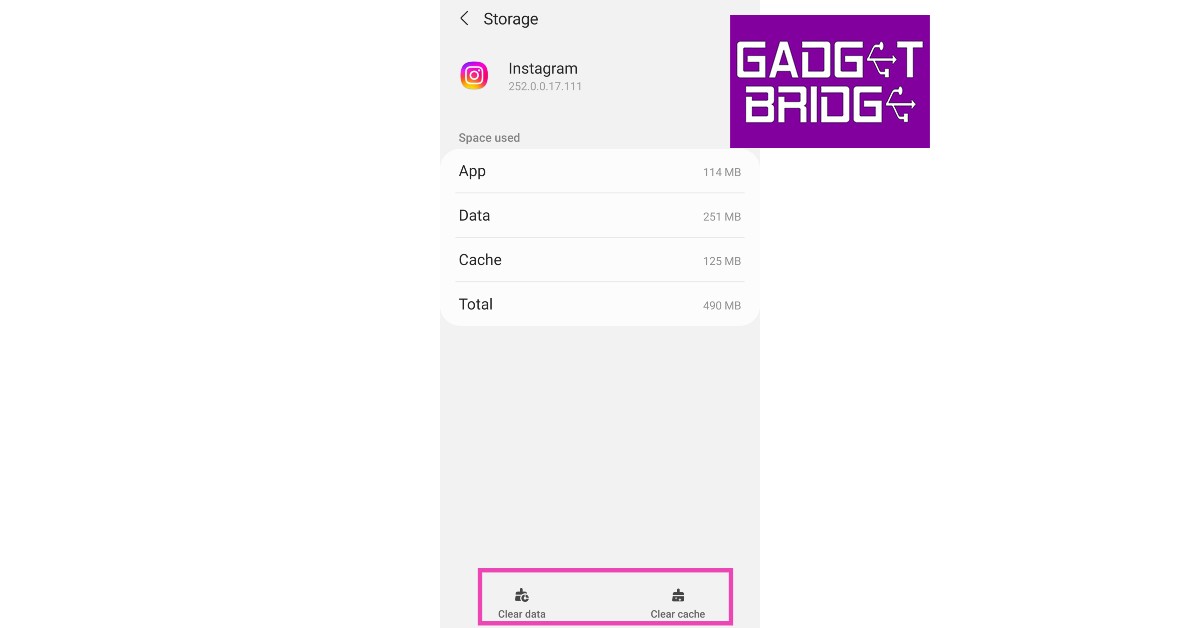



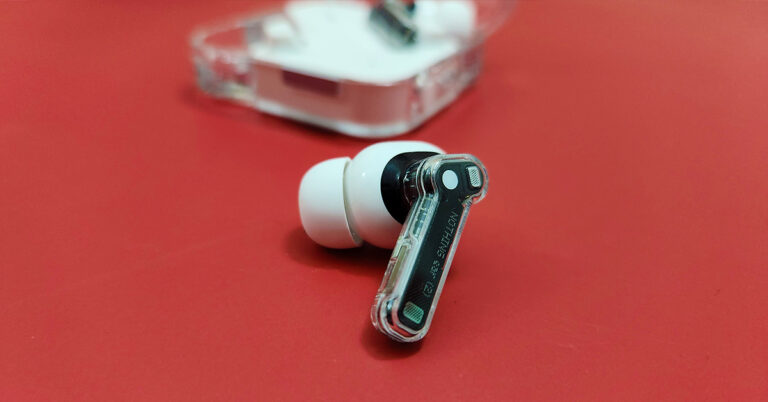
 Packaged in an eco-friendly cardboard outer package, you get a transparent charging case in which the Nothing Ear (2) lie, magnetically cocooned in their respective hollows. The lid of the charging case also slams shuts into place using a magnet, which has a nice thud to it when shut. The façade is very similar to the previous edition, except the charging case’s battery now protrudes out from the bottom. Again, to keep its weight low and to sport a smaller design, this has been done. We thought the case might wobble on a flat surface due to this, but it does not.
Packaged in an eco-friendly cardboard outer package, you get a transparent charging case in which the Nothing Ear (2) lie, magnetically cocooned in their respective hollows. The lid of the charging case also slams shuts into place using a magnet, which has a nice thud to it when shut. The façade is very similar to the previous edition, except the charging case’s battery now protrudes out from the bottom. Again, to keep its weight low and to sport a smaller design, this has been done. We thought the case might wobble on a flat surface due to this, but it does not.
 Moving to the build of the Nothing Ear (2) audio ear plugs, you get a smaller transparent stem on each with white audio driver enclosures and white silicon tips. Users also get additional silicon tips in the box to fit into different ear cavities. For us, the default ones were just fine. We quite liked what we saw and these half-transparent earphones sure look yummy for the taking. Each earpiece has multiple microphones to keep the noise out up to 40-decibel levels. More on that a little later.
Moving to the build of the Nothing Ear (2) audio ear plugs, you get a smaller transparent stem on each with white audio driver enclosures and white silicon tips. Users also get additional silicon tips in the box to fit into different ear cavities. For us, the default ones were just fine. We quite liked what we saw and these half-transparent earphones sure look yummy for the taking. Each earpiece has multiple microphones to keep the noise out up to 40-decibel levels. More on that a little later. Consumers also get a strung
Consumers also get a strung  For us, we love a more bassy setup. If you do not like what the app has to provide (which we doubt) you can also head into the equaliser part of the app and play around with different modes. And there are 4-5 of them. We loved every beat the Nothing Ear (2) provided us with. These are spectacular in the resonance department and we were not expecting the brilliant thump they provide. The bass can put some of the over-the-ear headphones to shame.
We listened to quite a few tracks we are drooling over these days and when we tuned into them with the Nothing Ear (2), we heard newer never heard before beats in the same songs. Jaws Dropped!
After we collected ourselves back up by just getting a great music beat down, or up, whatever you want to call it, we charged towards the gaming section of our smartphone. We turned on the low lag mode in the Nothing X app and it did manage to reduce the sound lag by quite a few milliseconds. Overall, the gaming experience was not bad either with the Nothing Ear (2).
For us, we love a more bassy setup. If you do not like what the app has to provide (which we doubt) you can also head into the equaliser part of the app and play around with different modes. And there are 4-5 of them. We loved every beat the Nothing Ear (2) provided us with. These are spectacular in the resonance department and we were not expecting the brilliant thump they provide. The bass can put some of the over-the-ear headphones to shame.
We listened to quite a few tracks we are drooling over these days and when we tuned into them with the Nothing Ear (2), we heard newer never heard before beats in the same songs. Jaws Dropped!
After we collected ourselves back up by just getting a great music beat down, or up, whatever you want to call it, we charged towards the gaming section of our smartphone. We turned on the low lag mode in the Nothing X app and it did manage to reduce the sound lag by quite a few milliseconds. Overall, the gaming experience was not bad either with the Nothing Ear (2). The Nothing Ear (2) come with Active Noise Cancelation (ANC), too. You get three modes (off, transparency and noise cancellation) which can be accessed using the app. The ANC can also be controlled by pinching and holding the stem of the earphones. Talking about which, there are pinch controls on the Nothing Ear (2) as well.
The Nothing Ear (2) come with Active Noise Cancelation (ANC), too. You get three modes (off, transparency and noise cancellation) which can be accessed using the app. The ANC can also be controlled by pinching and holding the stem of the earphones. Talking about which, there are pinch controls on the Nothing Ear (2) as well. You can triple or double pinch to skip back or forward a track, single pinch to play/pause a track or answer or cut a call. 9 out of 10 times these worked as marketed. However, you cannot control the volume with them. For that, you would need to bring out the smartphone.
Moving to the battery life of the Nothing Ear (2), these sport a 33mAh battery in the earphones and an additional 485mAh battery in the case. The company says you can get 6.3 hours of battery from the earbuds and 36 hours of additional playback with the charging case (ANC off).
This is more or less right. We were able to squeeze in 5.75 hours of playback and got another 33 hours using the charging case. With the ANC turned on we got 3.5 hours of music playback from the earpieces and additional 20 hours from the charging case. This, overall, is not bad coming from such a small contraption.
Talking a little bit more about the Nothing Ear (2), the earphones have an IP54 rating for water and dust resistance and the case has an IP55 rating. The case also supports wireless Qi charging of up to 2.5w. Over that, these also support multi-device connectivity. You can pair them with your mobile phone as well as the laptop at the same time enabling you to take calls and listen to music from the laptop without switching Bluetooth. Lastly, Bluetooth version 5.2 is what these earbuds use.
You can triple or double pinch to skip back or forward a track, single pinch to play/pause a track or answer or cut a call. 9 out of 10 times these worked as marketed. However, you cannot control the volume with them. For that, you would need to bring out the smartphone.
Moving to the battery life of the Nothing Ear (2), these sport a 33mAh battery in the earphones and an additional 485mAh battery in the case. The company says you can get 6.3 hours of battery from the earbuds and 36 hours of additional playback with the charging case (ANC off).
This is more or less right. We were able to squeeze in 5.75 hours of playback and got another 33 hours using the charging case. With the ANC turned on we got 3.5 hours of music playback from the earpieces and additional 20 hours from the charging case. This, overall, is not bad coming from such a small contraption.
Talking a little bit more about the Nothing Ear (2), the earphones have an IP54 rating for water and dust resistance and the case has an IP55 rating. The case also supports wireless Qi charging of up to 2.5w. Over that, these also support multi-device connectivity. You can pair them with your mobile phone as well as the laptop at the same time enabling you to take calls and listen to music from the laptop without switching Bluetooth. Lastly, Bluetooth version 5.2 is what these earbuds use.
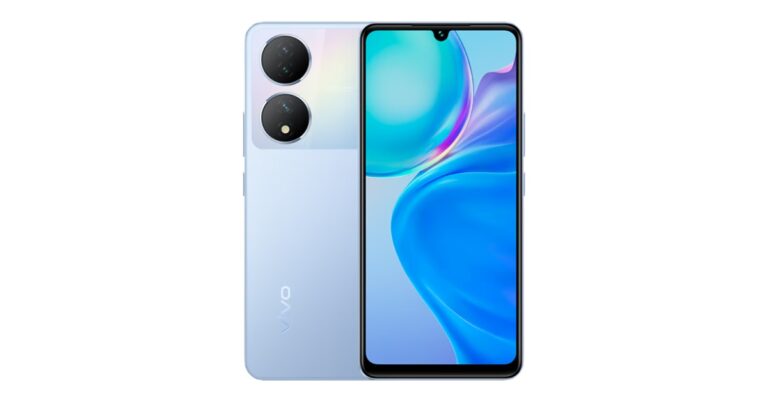














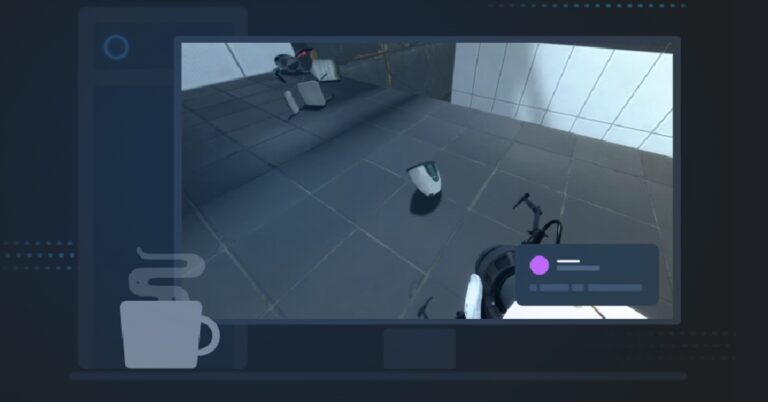
 Step 2:
Step 2: Step 3:
Step 3:
 Step 4:
Step 4: Step 5:
Step 5:  Step 2:
Step 2: Step 3:
Step 3: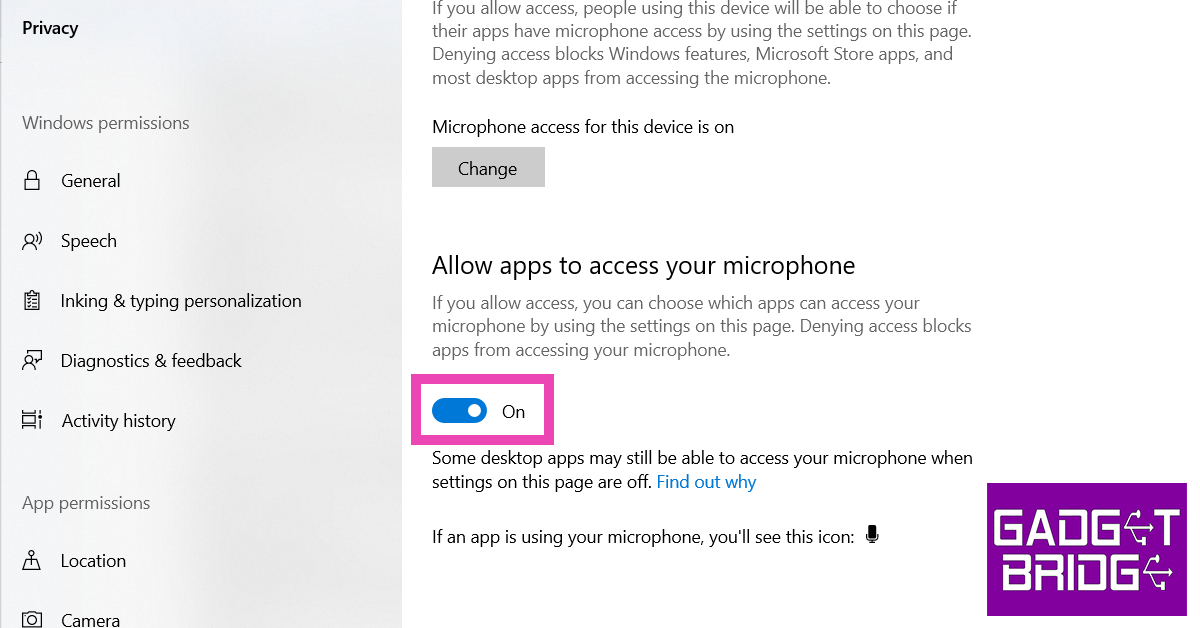




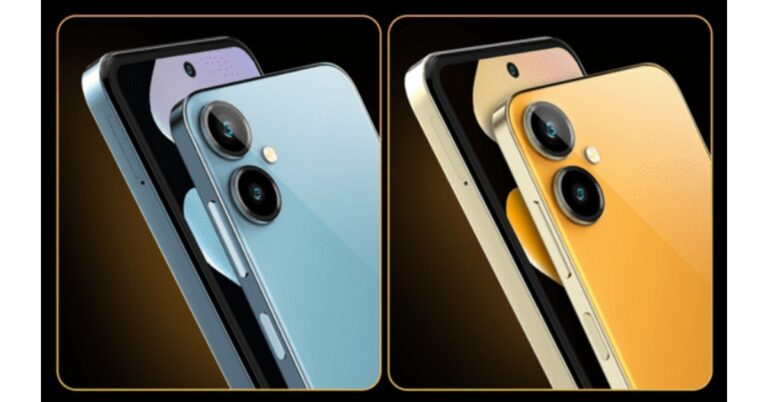

![9 easy fixes for Facebook Not Loading Properly on smartphone [Solved] 9 easy fixes for Facebook Not Loading Properly on smartphone [Solved]](https://www.gadgetbridge.com/wp-content/uploads/2023/04/無標題2-768x402.jpg)






























